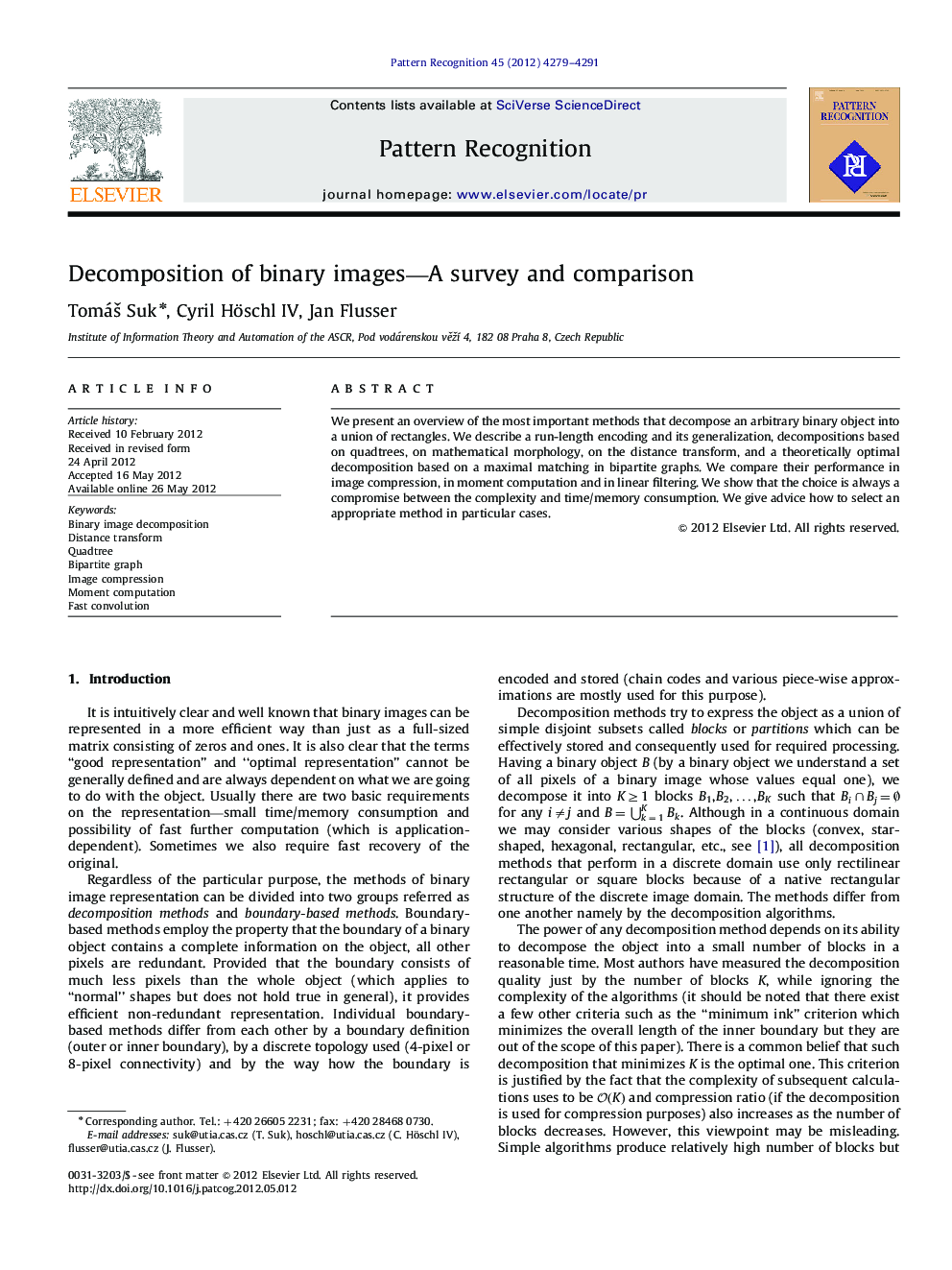| Article ID | Journal | Published Year | Pages | File Type |
|---|---|---|---|---|
| 530136 | Pattern Recognition | 2012 | 13 Pages |
We present an overview of the most important methods that decompose an arbitrary binary object into a union of rectangles. We describe a run-length encoding and its generalization, decompositions based on quadtrees, on mathematical morphology, on the distance transform, and a theoretically optimal decomposition based on a maximal matching in bipartite graphs. We compare their performance in image compression, in moment computation and in linear filtering. We show that the choice is always a compromise between the complexity and time/memory consumption. We give advice how to select an appropriate method in particular cases.
► Decomposition of binary objects to rectangles is useful in various applications. ► Compression, backward composition, feature computation, and convolution speed-up. ► There are a few methods of such decomposition. ► They differ by efficiency of results and by computing complexity.
